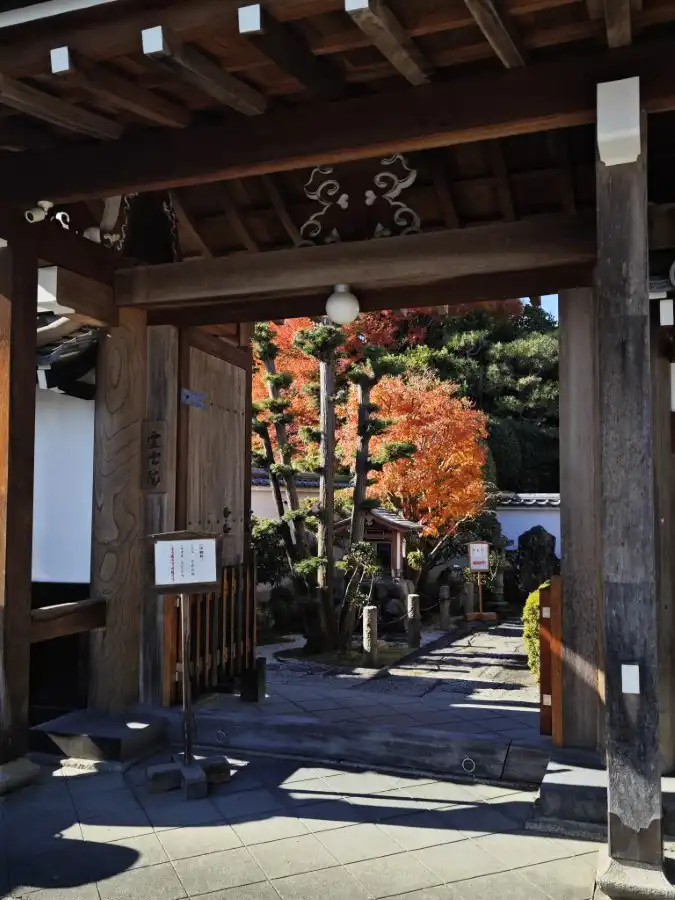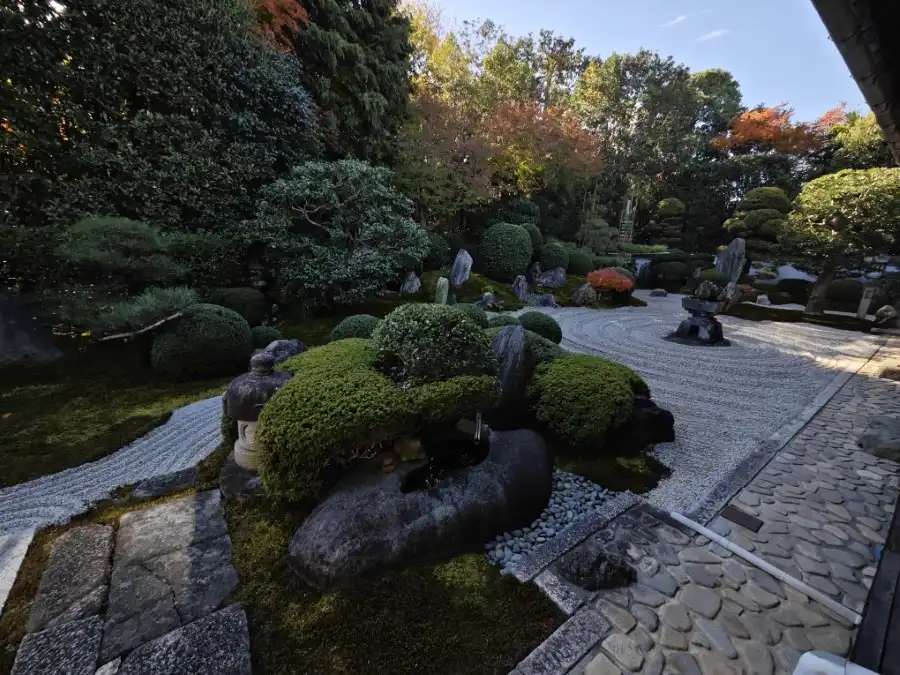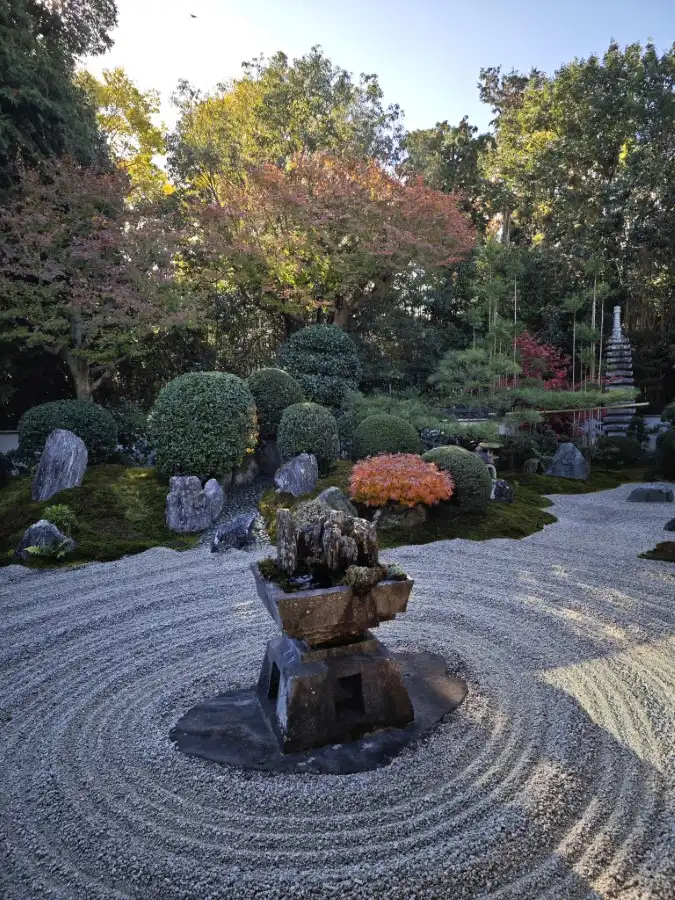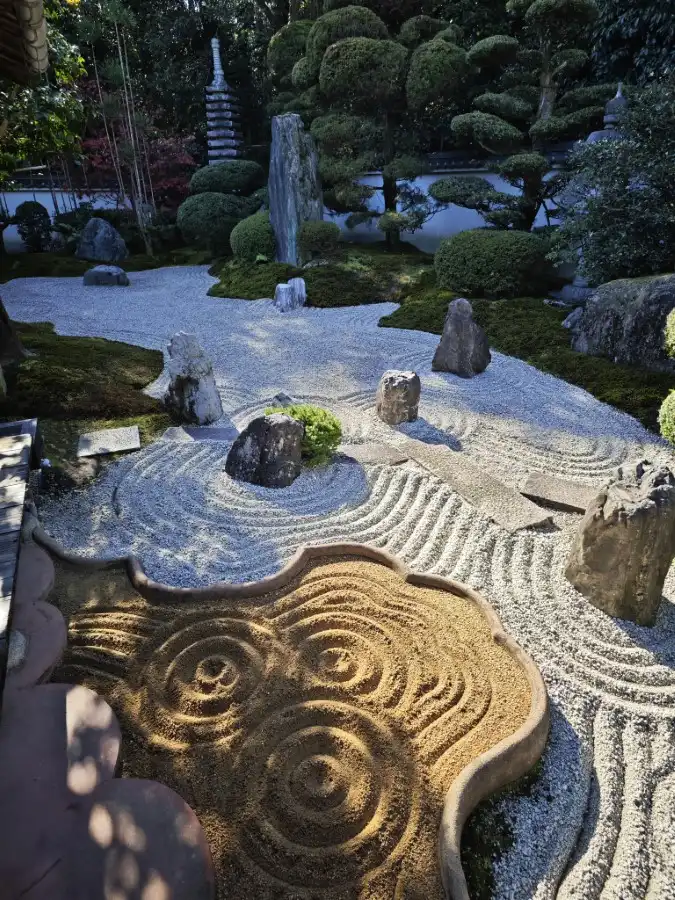Reiun-in, nestled is a serene temple that encapsulates the essence of Japanese tranquility. The temple grounds boast meticulously manicured gardens, where lush greenery surrounds traditional architecture. A sense of harmony pervades the air as visitors explore the carefully designed spaces, adorned with symbolic elements. Reiun-in stands as a testament to Kyoto’s rich cultural heritage, offering a retreat from the bustling city. With its peaceful ambiance and captivating aesthetics, the temple provides a contemplative haven for those seeking solace and a connection to Japan’s spiritual legacy.

History
The monk Kiyo Houshu founded Reiun-in in 1390. At that time, the name of this temple was Fujian. Kiyo Hoshu was a high priest who had served as the 64th head monk of Tenryuji Temple, the 96th head monk of Nanzenji Temple, and the 80th head monk of Tofukuji Temple.
Reiun-in’s 7th head monk Shosetsu was from Kumamoto, Higo. And he was a close friend of the feudal lord Tadatoshi Hosokawa. When the monk became the abbot of Reiun-in (the then Fujian), Hosokawa family wanted to give the temple 350 koku. But he Shosetsu told, “After being ordained, the stipend is the devil of Zen meditation. However, if you give us a precious stone from your garden, it should become a temple treasure”. The Hosokawa family named the stone “Iaiseki” (stone of love), and made a shumidai and a stone boat for the stone.
At the end of the Edo period (1603-1867), Saigo Takamori and Gessho, the abbot of Kiyomizu Temple Seijoin, secretly discussed the overthrow of the shogunate at this temple. It also served as a Russian POW camp during the Russo-Japanese War.
Gardens in Reiun-in
The garden in front of the Shoin, “Kusenhakkai (nine mountains and eight seas)” was created in the mid-Edo period. It was introduced in the book “Tōrinsen Meishō Zue” published in the middle of the Edo period (1603-1868) as a rare garden with a stone “Iaiseki”. But it had been in disrepair for a long time. Mirei Shigemori restored it in 1970.

The stone, Iaiseki, is a bluish pebble about three feet high and four feet wide. It is placed in a square stone boat on top of the Shumidai. The seventh abbot, Shosetsu, was a native of Kumamoto, Higo. And he was a close friend of the feudal lord Hosokawa Tadatoshi. When Shosetsu moved to Reiun-in as abbot, the Hosokawa family offered him a stipend of 500 koku. However, the monk said, “After being ordained, the nobility of a stipend is a sign of the evilness of Zen meditation. If I can receive a precious stone from the garden, it should become a temple treasure”. Therefore, the Hosokawa family donated the stone Iaiseki together with a shumidai and a stone boat. Iaiseki means “stone of love”.

The Nine Mountains and Eight Seas (Kusenhakkai) is a Buddhist worldview in which eight mountains and eight seas surround Mount Shumisen. The Iaiseki (stone) is used to represent Mount Shumisen. And the ripples in the white sand represent the mountains and oceans.

Tea house
Kangetsutei is one of the few two-story tea rooms in Japan. It has four-and-a-half tatami mat seats on the lower floor and five-and-a-half tatami mat seats on the upper floor. The five-and-a-half tatami mat seats in particular invite the visitor to a state of unmindfulness as he or she enjoys a cup of tea above the clouds that rise up in the “Gaun no Niwa” (Gaun Garden) below. Kangetsutei is not open to the public.
Nearby spots from Reiun-in Temple
Tofukuji Temple and its sub-temples surround this temple.
The nearest sub-temple is Ikka-in temple. Ikka-in temple is open to the public for a limited period of time.
Shorinji Temple is famous for its Bishamonten statue. You can enter Shorinji Temple at any time. But the Bishamonten statue is only open to the public during special periods.
Related articles:
[…] Temple, Komyo-in Temple, Bishamondo Shorinji, Manjuji Temple, Fundain Temple, Ikka-in Temple, Reiun-in Temple and Sokushu-in […]
[…] Reiun-in Temple is another sub-temple located just a short distance away. […]